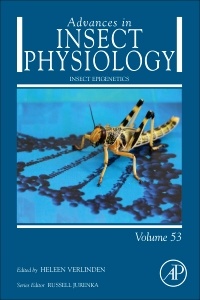Description
Insect Epigenetics
Director of collection: Jurenka Russell
Language: English
Subject for Insect Epigenetics:
Support: Print on demand
Description
/li>Contents
/li>Biography
/li>Comment
/li>
Insect Epigenetics, Volume 53 provides readers with the latest interdisciplinary reviews on the topic. Updated chapters in this new release include Epigenetics in insects: Mechanisms, ecological outcomes, and evolutionary consequences, Nutrition and epigenetic change in insects, microRNAs in Drosophila insulin regulation, Epigenetic regulation of longevity in insects, Epigenetic influences on diapause, the Impact of parasites on epigenetics of their insect hosts, The molecular physiology of locust swarming behavior, The future of environmental epigenetics: insights using the clonal water-flea model, and. Epigenetics ? A hidden target of insecticides.
Led by volume editor Heleen Verlinden, this is an essential reference source for entomologists, zoologists, geneticists and insect chemists.
Introduction Heleen Verlinden 1. Epigenetics in insects: Mechanisms, phenotypes, and ecological and evolutionary implications Warren W. Burggren 2. Nutrition and epigenetic change in insects Peter Dearden 3. microRNAs in Drosophila insulin regulation Jerome Hui and William Bendena 4. Epigenetic regulation of longevity in insects Iryna Kozeretska and Alexander Vaiserman 5. Epigenetic influences on diapause Julie A. Reynolds 6. Impact of parasites on epigenetics of their insect hosts Andreas Vilcinskas 7. From Molecules to Management: Mechanisms and Consequences of Locust Phase Polyphenism Darron Anthony Cullen 8. The future of environmental epigenetics: insights using the clonal water-flea model Margaret Beaton and Marcin W. Wojewodzic Sr. 9. Epigenetics – A hidden target of insecticides Ann-Marie Oppold and Ruth Muller
- Presents a comprehensive overview of environmental impacts on insect epigenetics
- Written by leaders in their respective areas of research
- Ideal resource for entomologists, zoologists, geneticists and insect chemists
These books may interest you

Epigenetics and Psychiatric Disease 135.60 €

Advances in Insect Physiology 132.33 €


